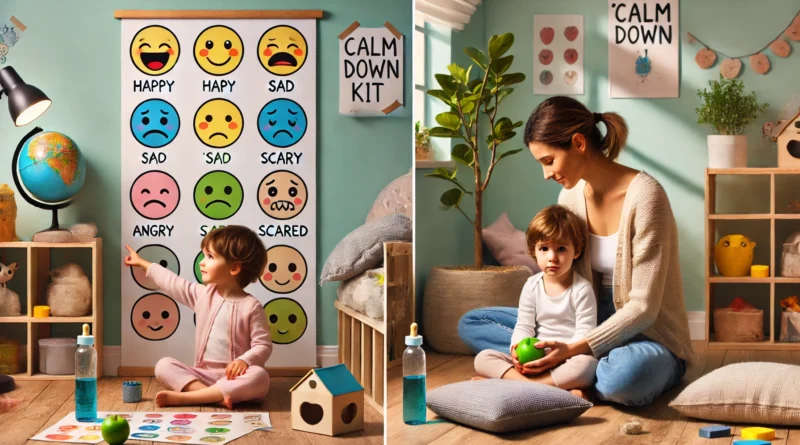How to Teach Young Children About Managing Emotions
Emotional development is just as important as learning to walk or read. Helping young children recognize and manage their feelings lays the foundation for healthy relationships, self-control, and lifelong mental well-being. With playful tools, daily routines, and lots of empathy, you can teach emotional skills in ways that make kids feel safe, seen, and strong.
Why Emotional Skills Matter
- Promotes emotional intelligence
- Supports self-regulation and behavior control
- Encourages empathy and communication
- Reduces tantrums and frustration
- Builds lifelong coping strategies
Option 1: Identifying Emotions Through Visual Tools
Activity Idea:
Use a “Feelings Chart” with faces showing emotions like happy, sad, mad, and scared.
Each day, ask: “How are you feeling right now?”
Let your child point, draw, or act out the emotion.
What Kids Learn:
- Vocabulary for emotions
- Awareness of their internal world
- That all feelings are okay to express
Tool Suggestion:
Create a DIY emotions wheel or download printable emoji-style charts.
Option 2: Calming Strategies and Coping Tools
Activity Idea:
Teach calming techniques like deep breathing (“smell the flower, blow the candle”), squeezing a stress ball, or taking a break in a cozy corner.
Use a “calm down kit” filled with quiet activities like books, sensory bottles, or soft toys.
What Kids Learn:
- How to manage strong emotions
- Positive ways to self-soothe
- Empowerment through choice
Book Suggestion:
Breathe Like a Bear by Kira Willey — introduces mindfulness and breathing to little ones in short, fun exercises.
Extra Ideas for Reinforcement
- Model your own emotional regulation: “I’m feeling frustrated, so I’m going to take deep breaths.”
- Use storybooks to highlight how characters deal with their feelings.
- Praise emotional expression: “You told me you were upset instead of yelling. That’s very grown-up!”
- Create a quiet zone or peace corner at home with pillows, books, and soft lighting for emotional resets.
Final Thoughts
Teaching children to understand and manage emotions is a gift that lasts a lifetime. When we help them name, accept, and calm their feelings, we show them that emotions aren’t problems—they’re part of being human. And with the right tools and support, kids learn to handle those feelings with confidence and care.
